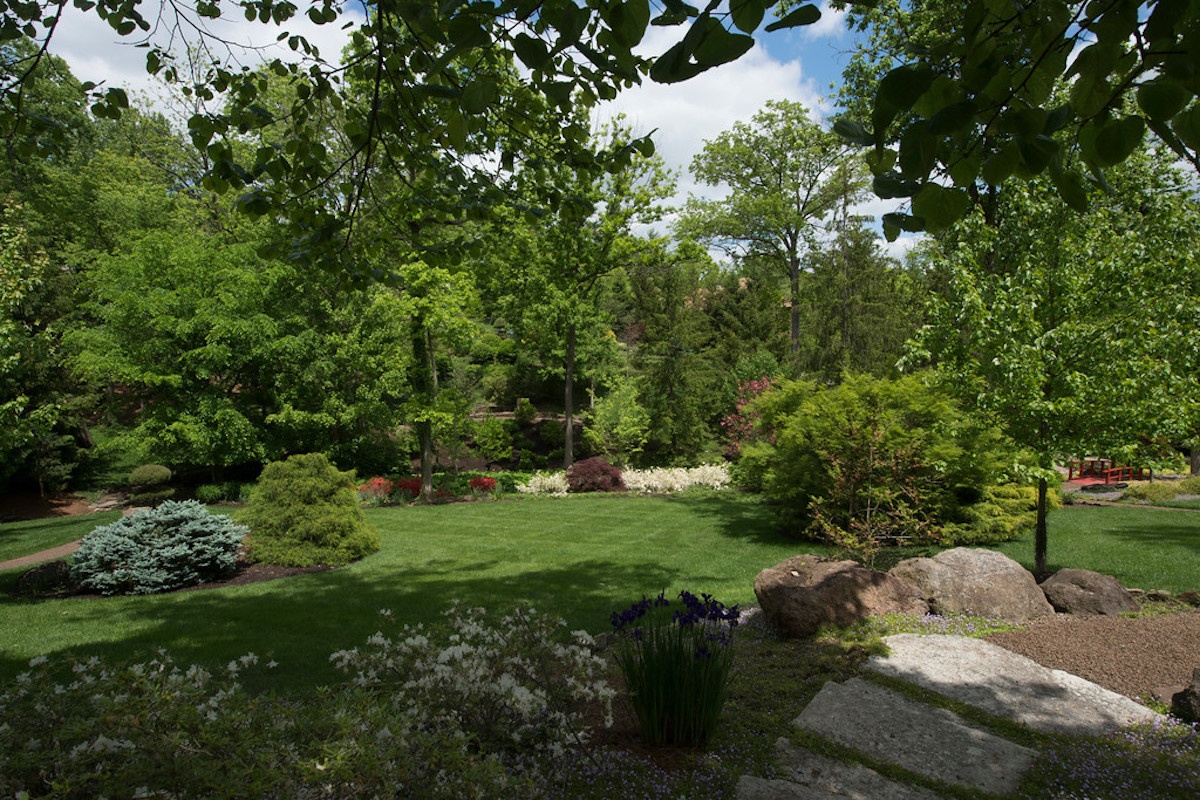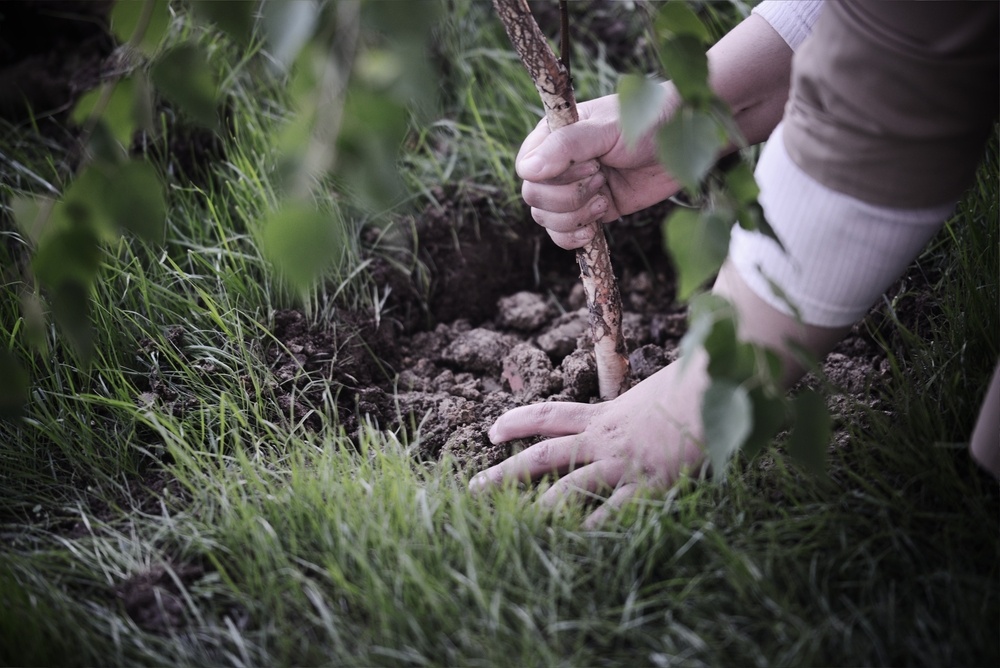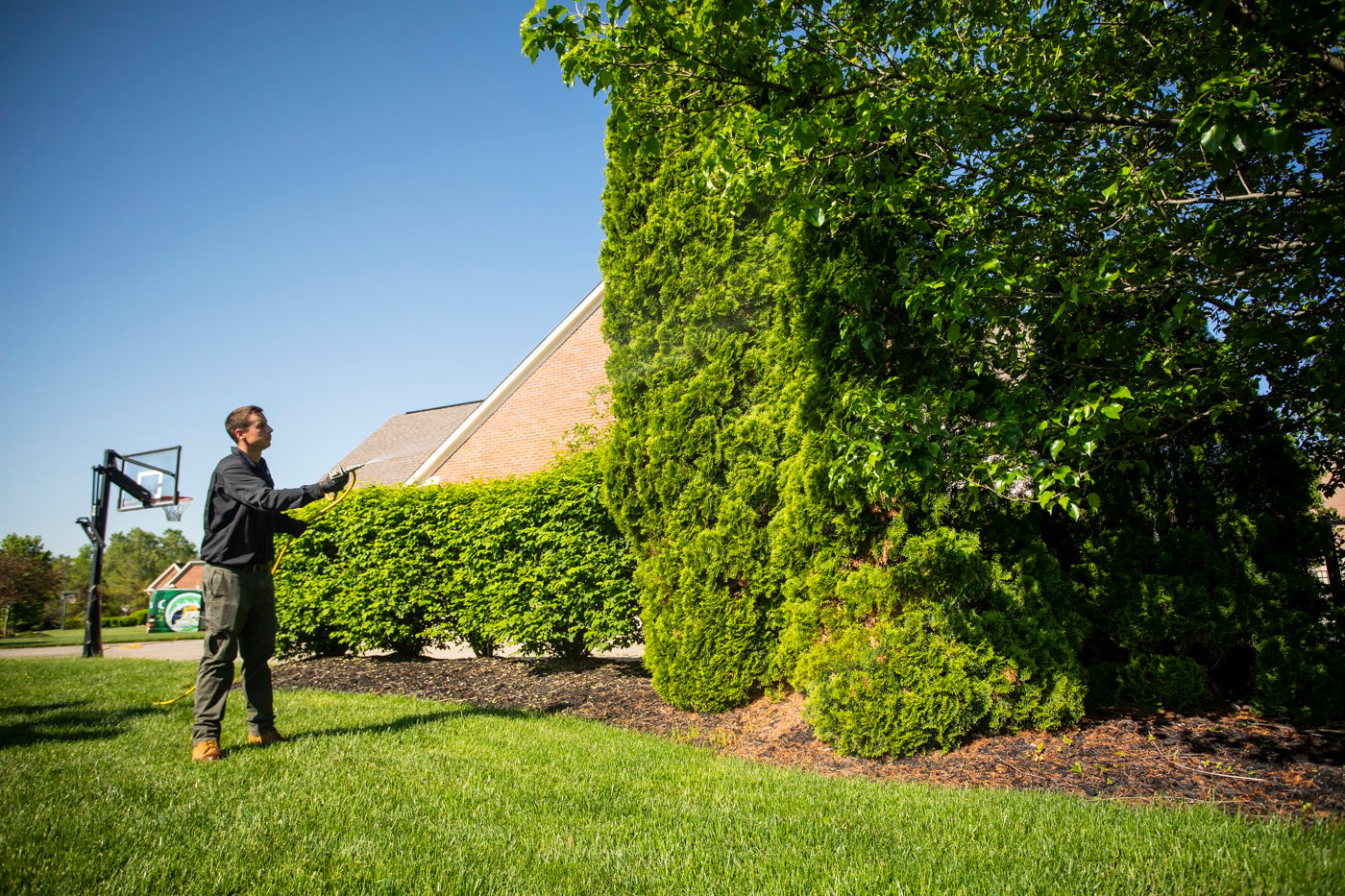Trees are one of your property’s greatest assets. They can provide a cool, shaded spot, block harsh winter winds, give you privacy from nosy neighbors, offer stunning aesthetic features to enhance your property, and increase its resale value. It’s no surprise that people love their trees.
Even though trees are amazingly resilient, they aren’t invincible. When signs of tree stress emerge and the plant eventually dies, its loss is often grieved by a homeowner. What causes tree stress? Is there a tree stress treatment that can save my tree? These are common questions we hear from frustrated homeowners.
Factors that lead to stressed tree symptoms and resulting tree deaths are often honest mistakes that come at the hands of a homeowner with very good intentions. The great news is, that there are preventative measures that can be taken to make sure this doesn’t happen to your trees.

In this article, we’d like to give you some practical tips on how to care for your trees and show you some of the most common causes of tree stress and death. It’s our goal that you’ll be better informed so that your trees can last for many decades.
What Causes Tree Stress and Death?
Stressed tree symptoms will manifest in a number of ways. Distorted or missing growth, substances or spots on foliage, and lack of vigor are some of the first clues that your tree is stressed.
However, regardless of the visual clues, there are many ways to avoid stressing out and killing trees on your property just by being aware of potential harms. Tree fatality is often from compounding factors that have happened over a number of years until they finally show tree stress symptoms.
Here are the 7 most common causes of tree stress:
1. Improper Tree Installation
This is one of the leading causes of tree death. Picking the wrong tree for the soil conditions can be huge factor, as well as installing it in the improper manner. It’s not as simple as just digging a hole and backfilling it. Be sure to do some research of what kind of soil your new tree should grow in and ask an expert if the soil in this location on your property meets the requirements.

Planting trees at the wrong depth, too close to the road, in a very wet area, or leaving guide wires around its trunk could lead to an ugly tree and eventual loss even15 years after the fact. These trees can have visible color changes, stunted growth for a number of years, and even sudden death.
For some additional tips on how to properly plant trees, check out the Arbor Day Foundation’s tree planting guide.
2. Improper Mulching Around Trees Causes Tree Stress
Mulching may be simple enough to perform, but doing so improperly around your trees could cause major tree stress signs you’ll see later. Heaping mulch around tree trunks or layers over 2” above their roots can cause major problems for trees. Dig down and inspect how deep the mulch around your tree is. If it’s excessive, this may mean you need to remove some or all of the existing mulch, particularly before adding a new layer.
Likewise, not having mulch under your trees could mean causing damage to their roots or branches from mowers. All trees benefit from a mulch layer as it retains moisture and gives a buffer of protection.
3. Poor Tree Watering Techniques
Giving a tree not enough or too much water can cause other tree stress symptoms such as yellowing and dropping foliage and will eventually cause dieback and death.
The first year is very critical when a tree is planted at your property, but trees of all ages suffer in times of drought or from overwatering. While true that a mature tree can survive, it can still lead to these tree stress symptoms and affect its health overall. Make sure your trees aren’t in waterlogged soils, but also get a deep watering every week.
4. Lawn-related Injuries That Can Hurt Trees
Grass should not be planted right up to trunk. This can give way to mower damage, soil compaction, and string trimmer cuts in the bark that will decay. Even in the case of evergreen trees, it’s good to have a mulch layer that extends past the tips of the branches to not damage tender buds.
Overuse of weed control materials under a tree, particularly to visible surface roots, will also lead to tree stress like curling foliage. Whenever possible, give your trees plenty of surface space of their own.
5. Improper Tree Pruning
Pruning at the wrong time (and with the wrong technique), opens up a tree to potential diseases and pests. Most trees benefit from dormant season pruning, but consult with a certified arborist for best practices for each species.
Certified professionals know to only remove 1/3 of growth or less at each pruning for deciduous trees, and don't over-manicure evergreen trees.
6. Construction Injuries to Trees
Not protecting plants sufficiently during home improvement projects will later lead to tree stress signs like branch dieback and eventual loss. The soil around your trees and branches need to be protected from heavy equipment.
Maintaining a barrier under and around trees can help soil not to be severely compacted and can also help to avoid soil being contaminated by equipment fluids, cleaning products, etc.)
7. Maintenance Neglect that Leads to Stressed Trees
Your trees may grow without much assistance for many years of their life without displaying tree stress symptoms. However, some varieties require additional attention for specific pests.

People often make the mistake of assuming that the relative healthy appearance of their trees means that they are not in need of care. In reality, trees just take much longer to exhibit tree stress symptoms, than say a lawn. By the time trees show obvious tree stress signs, it could be too late to remedy some issues and the damage could be irreversible.
Additionally, the soil in suburban neighborhoods is also not like an ideal forest floor where trees can thrive without little intervention. This means that the soil under and around your trees should regularly be fertilized and have natural elements added to improve the soil’s health. This will help your tree to survive the stressful suburban landscape.
How to Save Stressed Trees
It would be great to have some sort of magical elixir that could instantaneously revive trees to their intended glory. Unfortunately, some damages or tree stress symptoms are simply irreversible.
However, some of the issues listed above do have an effective plan to prevent, and some unhealthy issues your trees may be facing, may have a recommended treatment. Insects and mites are fairly predictable for each species of plant. Having a local tree service perform regular health treatments can prevent these issues.
Additionally, treatments to address the soil health around the trees and shrubs in your landscaping can not only keep them looking their best, but could help trees to naturally repair some injuries more quickly or even help young plants to establish more quickly.
Tree & Shrub Health Care Services
If you have stressed trees or shrubs in your landscape, the best starting point for a solution is to have one of our tree care professionals visit your property and diagnose specific problems and discuss how to prevent future problems.
We can work together to make sure your trees have a fighting chance to be enjoyed for the years to come.
Contact us today for a free tree and shrub evaluation to learn more about how Oasis Turf & Tree can help improve and protect your trees.
